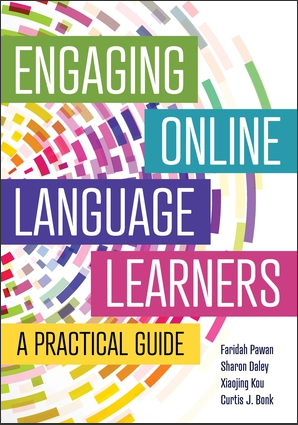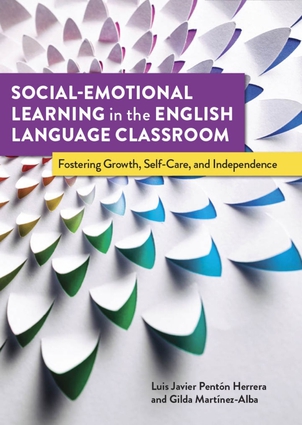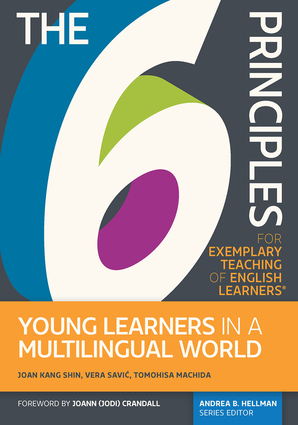TESOL Board Connect: From Crab Hats to the TESOL Board
by Tamara Jones

If you were to travel back 20 years in time and happened to
be wandering the halls of the 2002 TESOL Convention at the Salt Lake City
convention center, you would see a younger version of me sitting at a table in
the exhibit hall smiling gamely and wearing…a crab on my head. How did I end up
in such a strange state? Well, I was serving as a volunteer team leader for the
next TESOL Convention in Baltimore in 2003, and one of my duties was to help
create some buzz about it. I had no idea at the time, as I sat behind the
Baltimore 2003 desk wearing a crustacean hat and feeling slightly foolish, that
I was contributing to TESOL in an essential and valued way.
While it’s true that TESOL has a core group of
fantastically competent and enthusiastic staff members who attend to the
day-to-day business of running the association, a significant amount of work
also gets done by volunteers. Volunteers serve on committees, they read
proposals and articles, they write reports, they edit newsletters, they monitor
social media posts, they recruit other volunteers, they plan professional
development…the list of different ways that members support TESOL is seemingly
endless. Simply put, TESOL could not exist without such a large, energetic,
committed group of volunteers.
In fact, though I only had to wear the crab hat
once, I went on to volunteer for TESOL in a variety of forms. From my very
first interest section open meeting in 2001 where I expressed a casual interest
in being a part of the action to yesterday evening when I joined a Zoom meeting
of the Membership Professional Council, I’ve had the good fortune to be
involved in many aspects of the organization. I wish could say that my
motivation for devoting so much of my precious free time to TESOL has been
entirely altruistic. It’s certainly true that I believe strongly in the mission
of the organization and have a desire to help keep TESOL alive and healthy
through my own small efforts. However, if I had to really boil down why I have leaned into the volunteer opportunities that
have presented themselves, it’s been because it has been good for my career. I
met my future boss as I was wearing that crab hat in Salt Lake City. She
wandered by, asked if I lived in Maryland, and encouraged me to apply as an
adjunct. Twenty years later, I am the associate director of the program, and I
have that crab hat to thank! Through volunteering, I’ve also made professional
connections that have led to publishing opportunities. For example, I was
introducing an academic session I had organized in my capacity as an interest
section chair, and the sight of me reminded a representative from Oxford
University Press that I had submitted a proposal to do some writing for them.
She emailed me after the conference and invited me aboard the Q:
Skills for Success team. Simply put, so many of the good things that
have happened to me professionally have been directly or indirectly related to
the volunteering I’ve done for TESOL.
When I was at the Leadership Luncheon at TESOL in
Pittsburgh this past spring, I was surrounded by fellow volunteers. I took the
opportunity to ask a few of them why they were so generous with their time, and
the answers really varied. Some people talked about wanting to “give back” to
an organization which they felt had provided opportunities and professional
development for them. They also talked about the value of supporting a group
that supports the people doing the work in our field. Others mentioned a desire
to shape the future direction of the association. They described feeling
passionately about wanting to make sure that TESOL continued to serve specific
populations or ensuring specific topics are given attention in presentations
and publications. And many of them said they volunteer so they can make
connections with other professionals in the field. These connections can happen
locally, at the affiliate level, or internationally, through interest sections
and professional councils.
All of these reasons resonate with me, too. I love
the feeling of satisfaction I get from knowing that I am a part of an
association that is actively doing something to support teachers all over the
world. I also have enjoyed being able to put my stamp on the conference
schedule by being a proposal reader and strand coordinator for the convention.
As well, I have made so many wonderful friends through my various volunteer
roles, many of whom I have been in touch with for many years. There are just so
many upsides to serving as a TESOL volunteer.
It’s true that volunteering can be time-consuming
and decidedly unglamorous. Attending meetings on Saturdays, crawling around on
my floor physically piecing together a conference schedule (in the old days),
and finding time to read submissions to TESOL publications has occasionally
involved some personal sacrifice. However, I can honestly say that I have
gotten more out of volunteering for TESOL than I have contributed.
If you are reading this and thinking, “I have some
time and I could wear a crab hat,” then volunteering for TESOL might be for
you. If you are interested but hesitant, I encourage you to start small. Serve
as an award
reviewer or submit an article to an interest
section newsletter or affiliate
newsletter. You can find out about some of the different
opportunities here.
There are so many ways to get your feet wet, and almost none of them involve
fishy headwear.
Tamara Jones has taught in Russia, Korea, England, and Belgium. She is currently the associate director of the English Language Center at Howard Community College in Columbia, Maryland, USA. Tamara holds a PhD in education from the University of Sheffield in the United Kingdom.
TESOL Blogs
Interested in writing a blog for TESOL?
Read the submission guidelines and send us your post!
Check out some of the most recent TESOL Blogs:
|
8 Books to Read About Teaching MLLs, by Judie Haynes

In my April blog, I listed seven online resources that I generally read under the #MLLCHAT hashtag on Twitter. This month, I’m listing eight books published in 2021–22 and that have been recommended by participants of #MLLCHAT (formerly #ELLCHAT). These books are great reading for teachers of multilingual language learners (MLLs), general education teachers, school administrators, and other school staff who work with MLLs. Read more. |
|
Writing Across the Curriculum, by Betsy Gilliland

As TESOL professionals, we often think of ourselves as English teachers whose primary work is supporting our students to learn the English language. Learning English entails learning how to use English for various purposes, including writing in school and college. Sometimes textbooks or required curriculum frame writing as an exercise for practicing newly learned grammar structures or vocabulary words.
As I have discussed in previous blog posts, however, writing is not a skill that should be taught in isolation of its applications in the “real world,” whether that real world is a university classroom or a medical office or a factory. Today, I want to introduce you to a vibrant area of discussion in the writing studies community that may offer you some additional ideas for teaching English to your students. Read more. |
|
Using Language Portraits to Explore Students’ Identities, by Naashia Mohamed

Lily was born and raised in New Zealand and described herself as a Kiwi with Chinese heritage whose dominant language was English. She was proud of her Chinese background but did not use Mandarin for purposes beyond everyday conversation with her family. Her grandparents, based in China, described Lily as a “foreigner” because her proficiency in Mandarin and her understanding of Chinese culture did not meet their expectations. However, at school, Lily’s teacher regarded her as Chinese and as an English learner because she spoke a language other than English at home.
Lily’s example illustrates the complex nature of identities and how conflicts occur between our self-attributed and other-ascribed identities. Read more. |
TESOL Bookstore

Featured Resources from TESOL Press
 Engaging Online Language Learners: A Practical Guide
Engaging Online Language Learners: A Practical Guide
Faridah Pawan, Sharon Daley, Xiaojing Kou, and Curtis J. Bonk
While engaging and motivating students in the classroom has always been critical for student success, it is even more important and challenging in the online learning environment. This practical guide will provide English language educators with a number of strategies and ready-to-use activities to help them engage and motivate their students for improved learner outcomes. It also covers trends in online learning, engagement and motivation principles and competencies, as well as ways administrators can support teachers' professional development. As an additional resource, the book comes with a companion website. **This title also includes a companion website with online resources.
 Social-Emotional Learning in the English Language Classroom: Fostering Growth, Self-Care, and Independence
Social-Emotional Learning in the English Language Classroom: Fostering Growth, Self-Care, and Independence
Gilda Martinez-Alba and Luis Javier Pentón Herrera
While SEL is becoming increasing critical for learners’ success, teachers often feel unprepared to incorporate or address it in their classrooms. This book serves as a practical, concise, and easy-to-follow reference that English language teachers in K-12 and adult education and English language teacher educators can use in their classrooms. It is one of the limited emerging SEL resources available that is tailored to the English language teaching field and contributes to filling the existing gap of SEL in English language education. Teachers will be equipped with the necessary knowledge and skills to practice self-care and be confident in implementing SEL in their learning spaces to support and benefit their learners.
 The 6 Principles for Exemplary Teaching of English Learners®: Young Learners in a Multilingual World
The 6 Principles for Exemplary Teaching of English Learners®: Young Learners in a Multilingual World
Joan Kang Shin, Vera Savic, and Tomohisa Machida
This book guides educators in teaching young learners (2- to 12-year-olds) in an English as a foreign language setting by using The 6 Principles for Exemplary Teaching of English Learners® as a framework. A core set of principles for the exemplary teaching and learning of English as a new language, The 6 Principles and their recommended practices are targets of teaching excellence that provide teachers with the knowledge to improve instruction and assessment. Instructional techniques are illustrated throughout the book with numerous classroom examples, case studies, checklists, and vignettes.